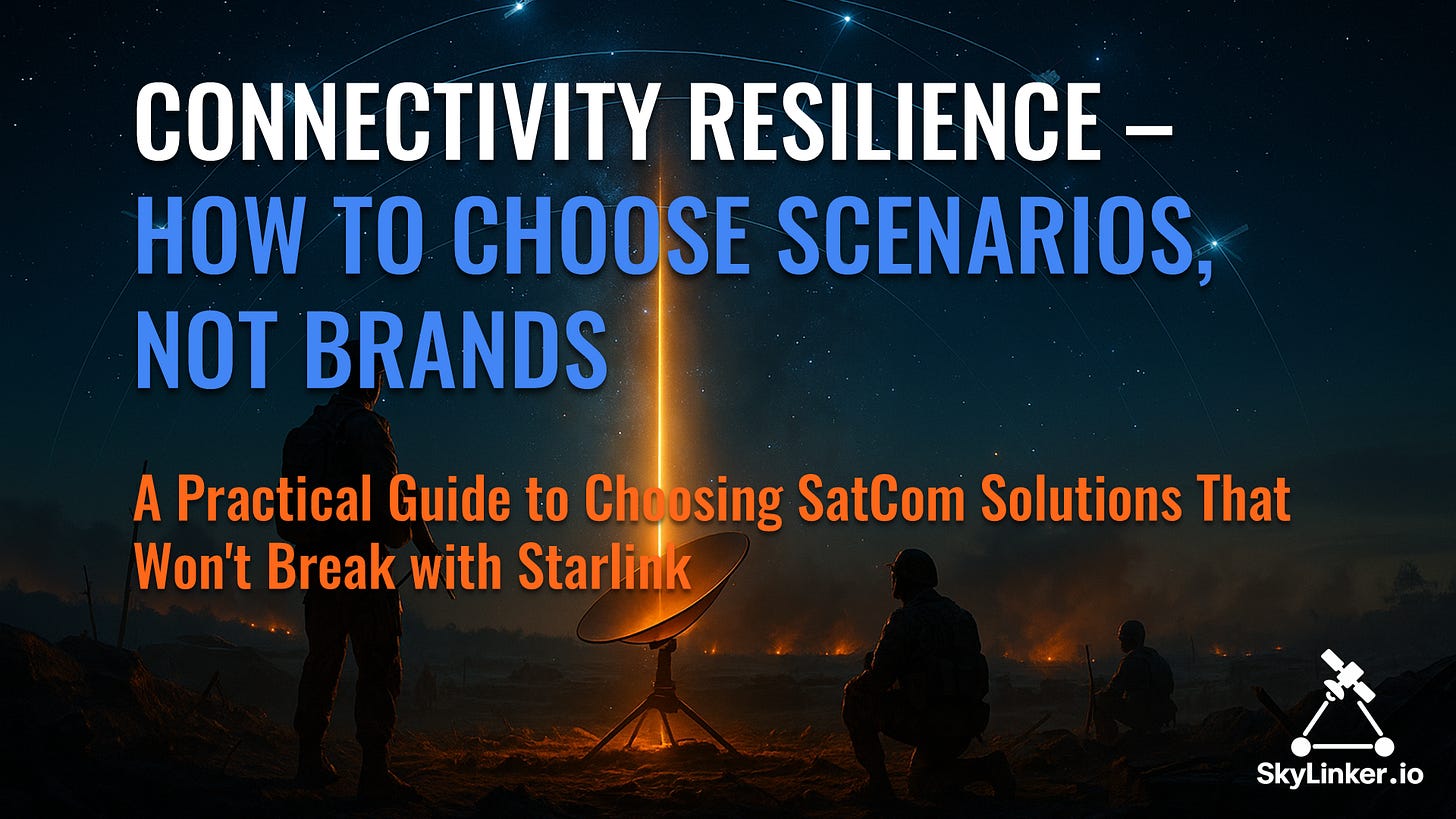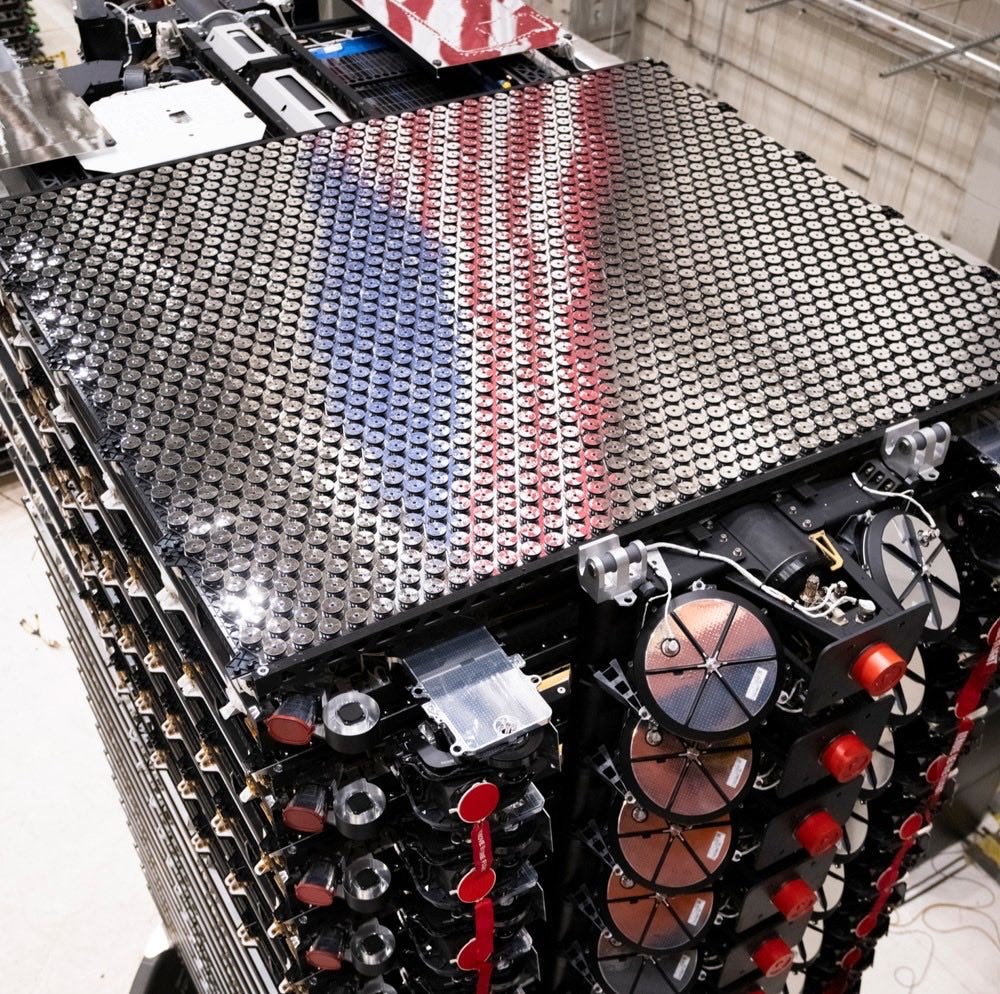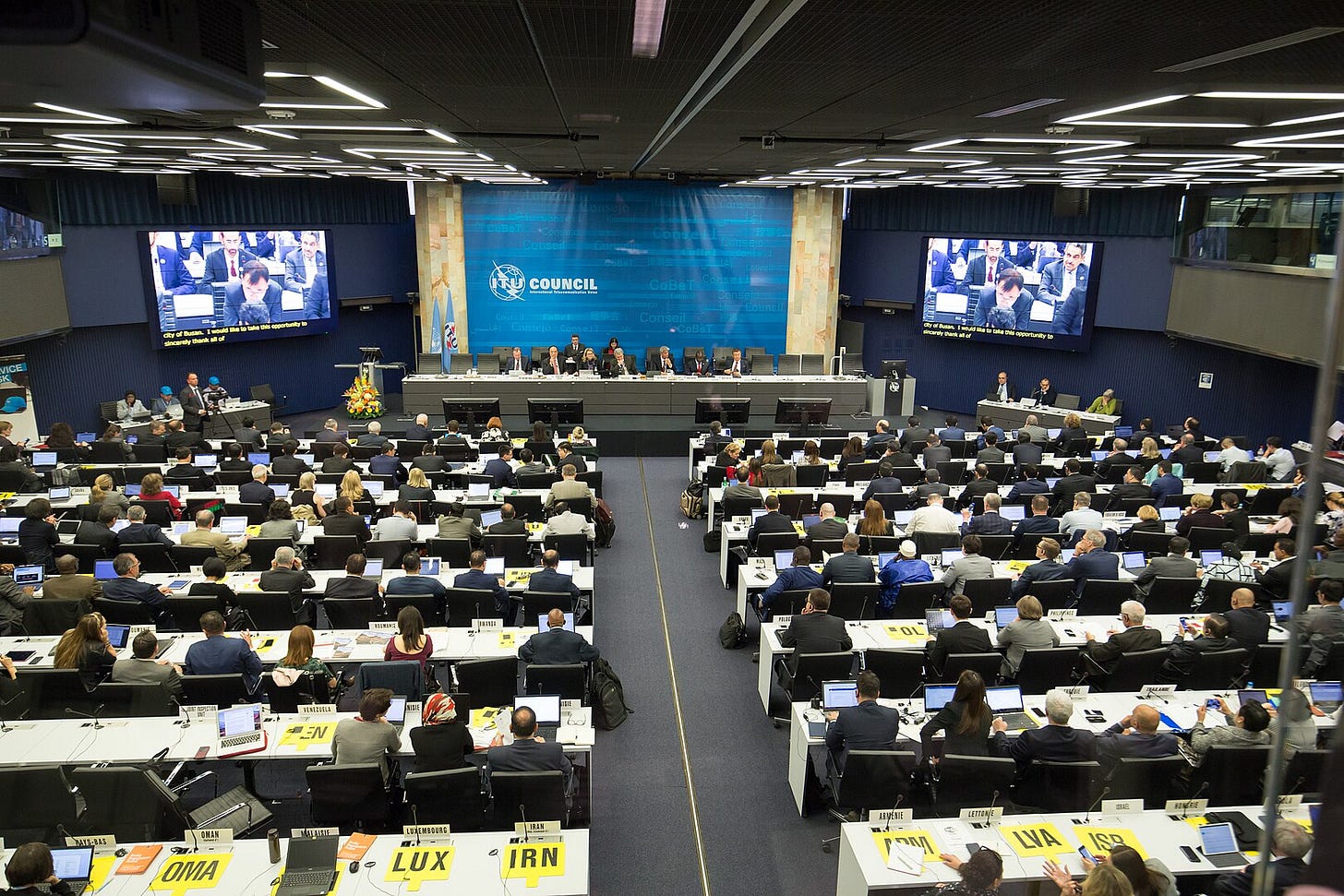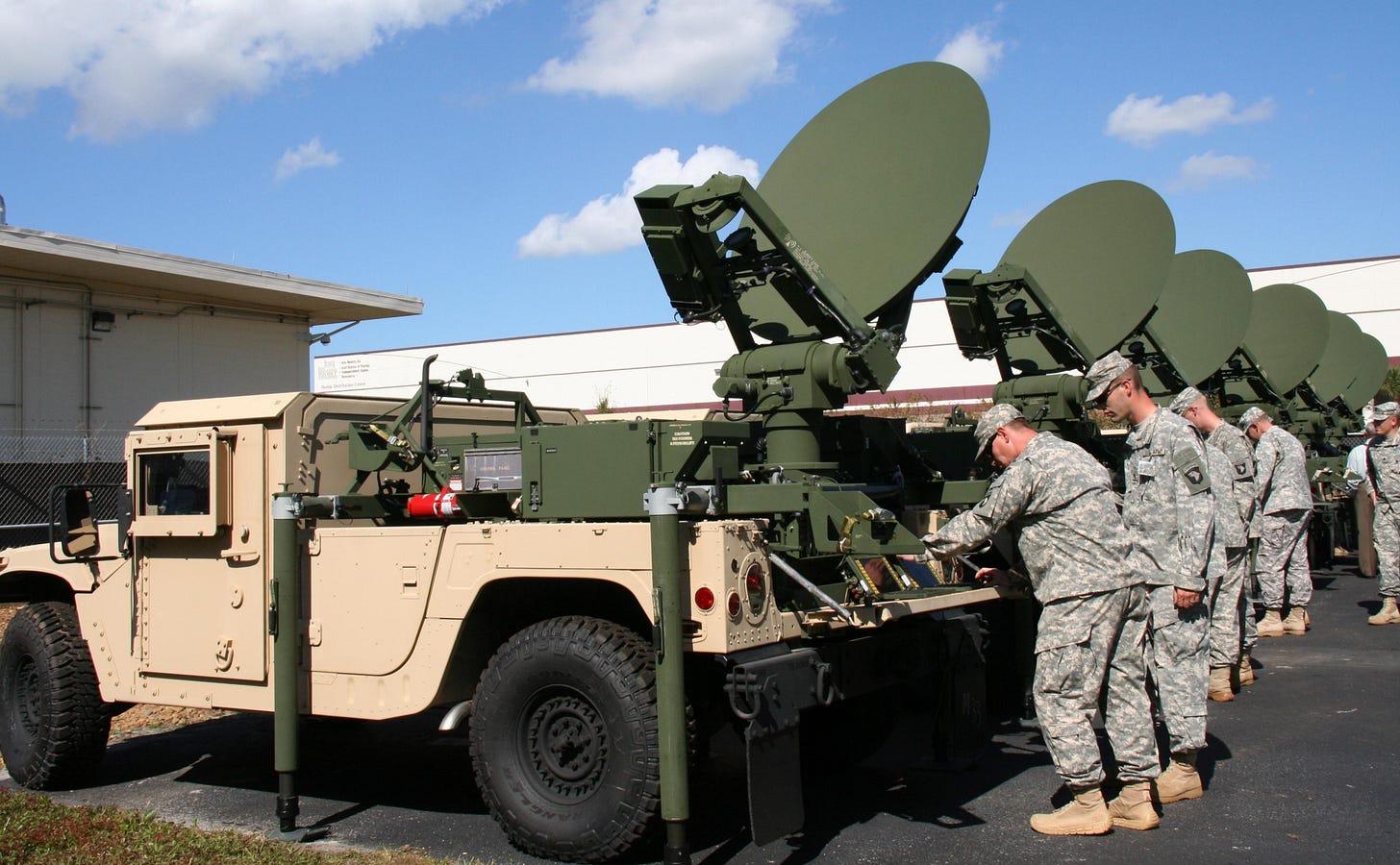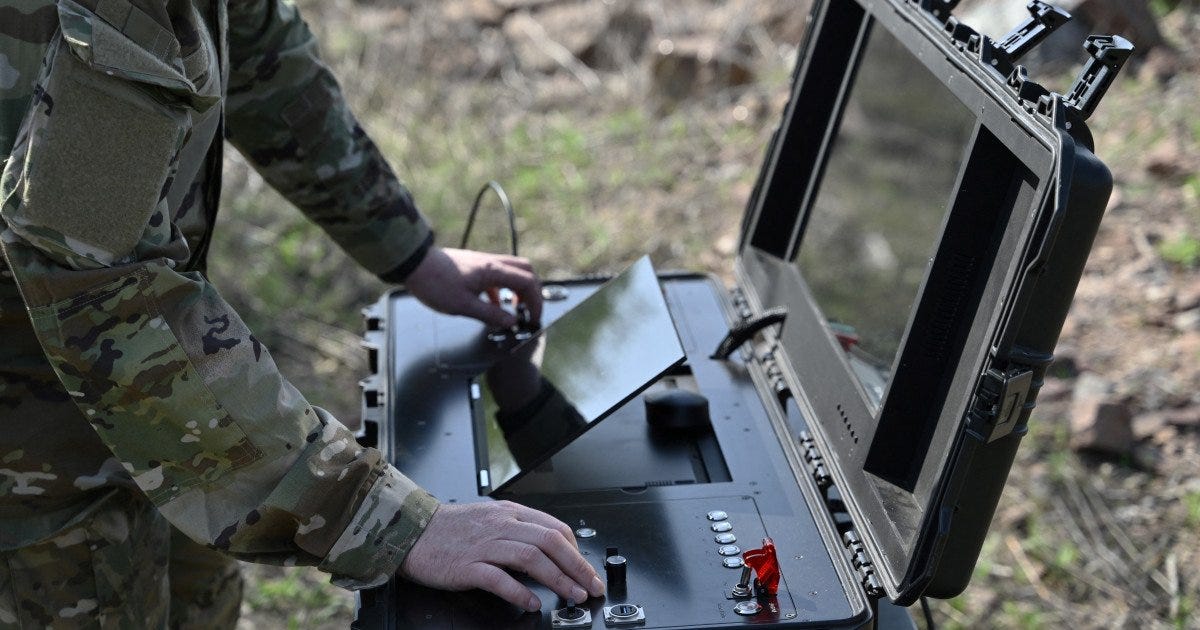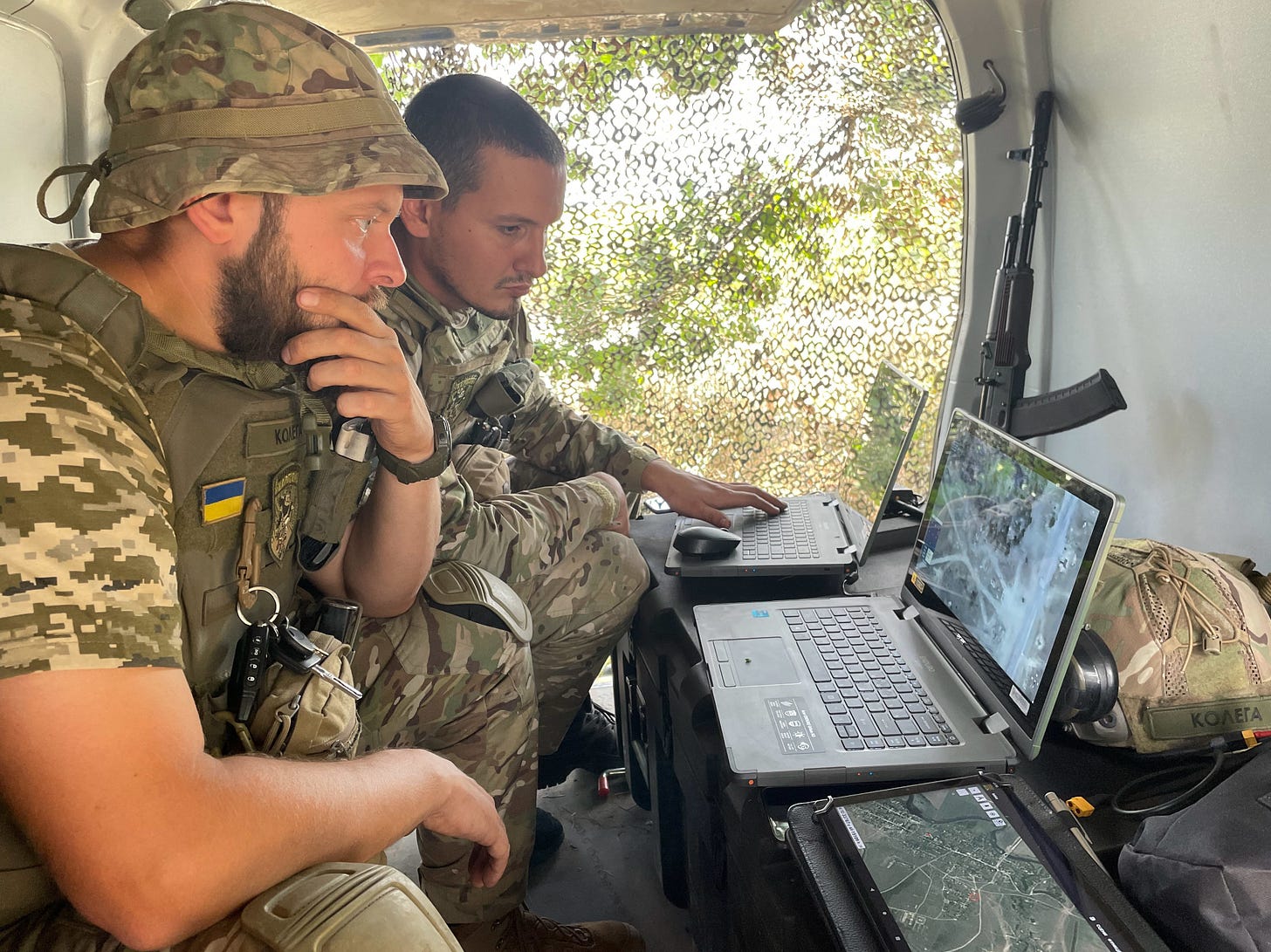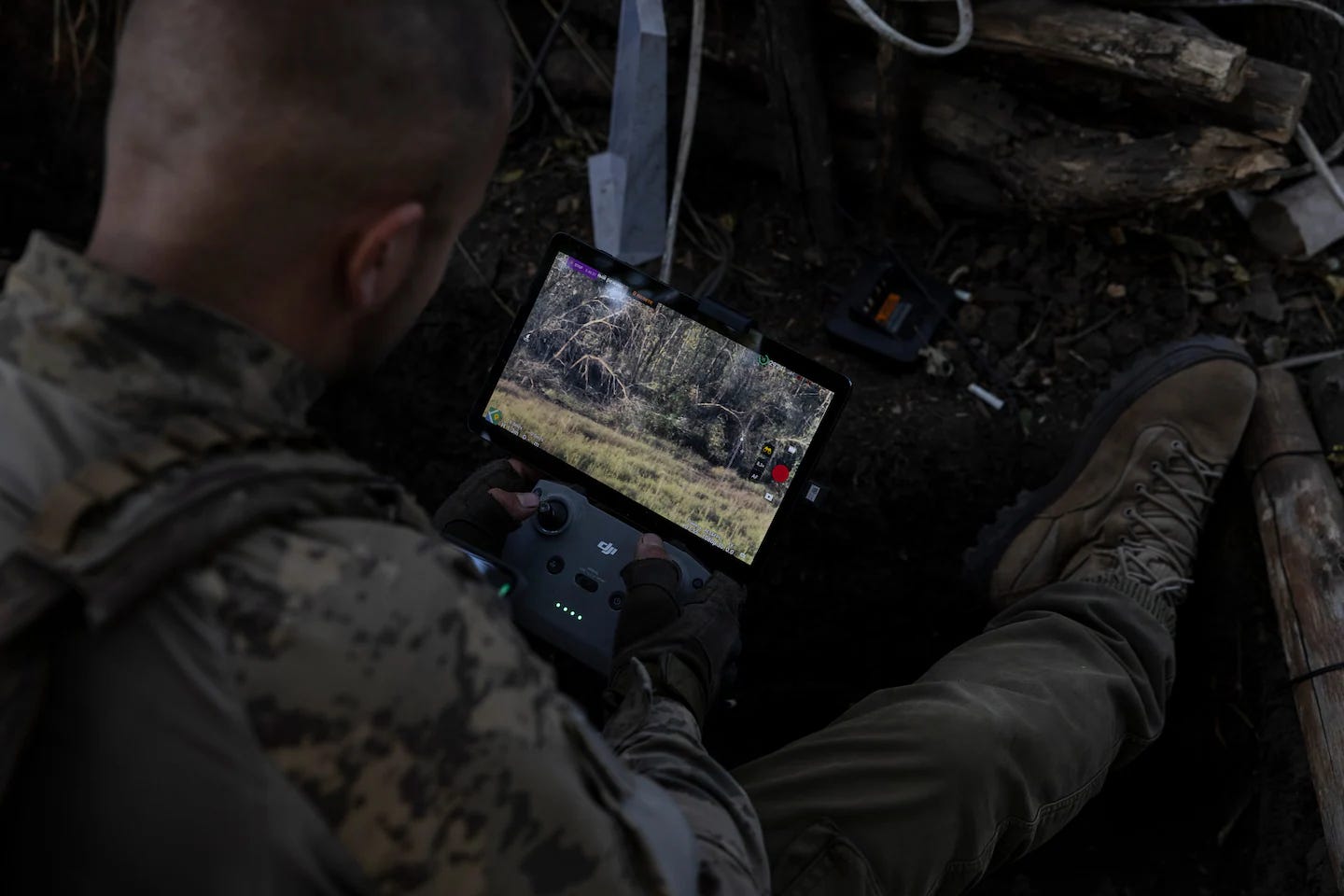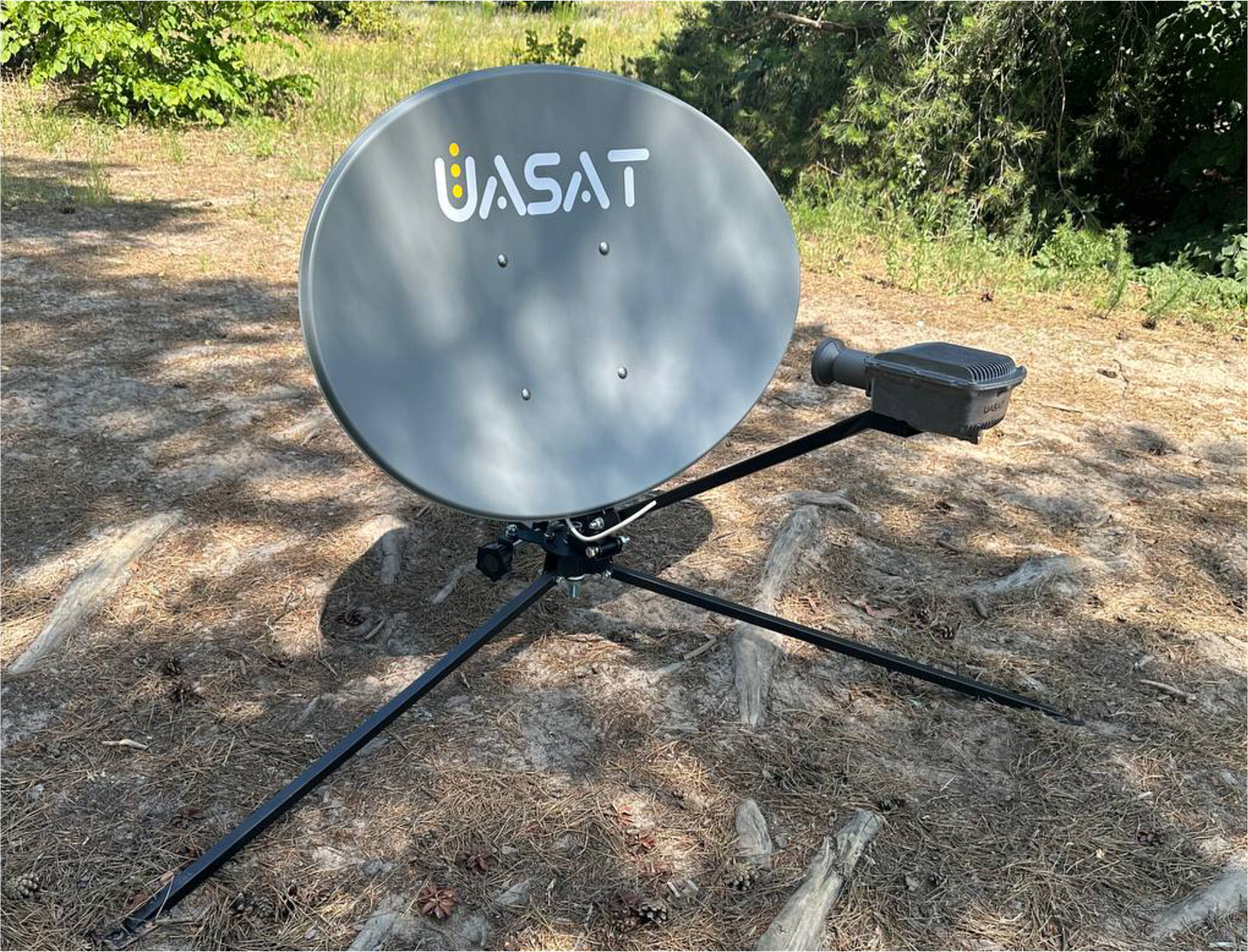Connectivity Resilience - Thinking in Scenarios, Not Brands
A practical guide for selecting satellite communication solutions that won't fail along with Starlink
The article is based on materials from the author’s training course “Satellite Communication: Keys to Understanding” by Volodymyr Stepanets.
A few minutes of silence on the air - and communication disappears where it is critically needed. Sometimes such silence costs lives... Ukraine has already felt how a single system failure can stop the work of units, logistics, command, or coordination.
Starlink has become a symbol of communication during this war: simple, effective, and accessible. But when any infrastructure relies on a single solution, it’s not a strength—it’s a vulnerability.
No network, even the best, can guarantee continuity in an environment where Electronic Warfare (EW), signal jamming, power outages, or geographical restrictions are active. Therefore, true connectivity resilience is not a question of “what to replace Starlink with,” but how to build a system that will work even when it suddenly becomes unavailable.
Today, Ukraine is one of the few countries simultaneously using all types of modern satellite and mobile communication—from large stations and mobile terminals to narrow-band devices and direct connection channels. This experience has proven that strength lies not in a single technology, but in the ability to combine several different solutions into a unified communication logic.
In this article, we will examine:
why Starlink has become the new benchmark for all satellite communication solutions;
how to understand the difference between various types of Satellite Communication Systems (SATCOM) and choose the right one for your scenario;
how to think not in brands but in tasks, conditions, and resilience;
how to build your own communication architecture that can withstand the failure of any single system.
So, our goal is to help you learn how to choose and plan the use of all available SATCOM systems, today or tomorrow, based on your own needs and the existing capabilities and limitations of these systems.
Starlink taught us that satellite communication can be simple. But true maturity begins when we learn to think not of a single device, but of a whole system where each channel has its role, and none is critical for the survival of the connection.
Thus, the article will not be about “alternatives,” or “what will generally replace Starlink for us.” It is precisely about how to build a communication system that will work even if Starlink is suddenly unavailable today or tomorrow.
The true alternative to Starlink is not another terminal, but a resilient communication ecosystem capable of surviving the failure of any single technology or component.
Why Starlink is the Benchmark and Starting Point
Starlink became for satellite communication what GSM once was for mobile communication—a universal standard that defined expectations. That is why any new solution in the field of satellite communications today is compared to Starlink.
The speed of deployment, autonomy, global connectivity, low barrier to entry, real “out-of-the-box” operation, along with an accessible price, have made Starlink a standard not only for civilian users but also for military, governmental, and critical infrastructure entities. It has become the gold standard of practicality—and the point of comparison for the entire industry.
The key factor is versatility: currently, there is no other SATCOM system capable of matching Starlink in ease of use and flexibility across usage scenarios—from stationary nodes and maritime platforms, to moving vehicles and drones (UAVs). On the ground, at sea, and in the air. That is, Starlink is, to some extent, an “all-terrain vehicle” in terms of usage scenarios.
The technological principles embedded in Starlink created a new type of thinking in the satellite industry. SpaceX was able to implement this approach on an unprecedented scale, and now any new operator—OneWeb, Kuiper, Rivada, or Telesat—is compared precisely to Starlink.
What made it technologically unique
Starlink is not a “magic network,” but a system in which dozens of technologies finally began to work in synchronicity. It is the first historical implementation of a mass-market satellite architecture built around a software core:
A LEO-constellation of thousands of satellites forming a continuous coverage grid;
Software-Defined Payloads with Laser Inter-Satellite Links (ISL) that transmit data without involving the ground;
A multi-beam architecture with dynamic switching between both satellites and user terminals;
Automated tracking and network management based on Artificial Intelligence (AI), which analyzes load, latency, and allocates bandwidth in real-time;
Centralized management through a network of gateway-stations that coordinate beams, routes, and satellite telemetry;
Universal “smart” terminals with Active Phased Array Antenna (APAA)—compact, efficient, with electronic steering instead of mechanics. They support both On-the-Move (OTM) and On-the-Pause (OTP) or stationary operation.
Yes, most of these solutions were not invented at SpaceX. However, it was Starlink that made them all play together in one orchestra—effectively, scalably, and accessibly for millions of users.
How SpaceX changed the ITU rules of the game
The way Starlink even obtained the right to exist deserves separate attention. In the world of satellite communication, the role of “Zeus on Olympus” is performed by the ITU (International Telecommunication Union)—the organization that coordinates radio frequencies, orbits, standards, and satellite services. Without its permission, satellites cannot legally operate or provide services.
The problem is that ITU regulations remained archaic—they were created for GEO-satellites and were completely unprepared for thousands of moving LEO-satellites.
Starlink did not fit into the old categories. SpaceX was forced to “squeeze” into the ITU/FCC framework by registering Starlink as an FSS non-GSO system (Fixed-Satellite Service), although it is essentially a mobile network. This move was a regulatory hack—not a violation, but a reinterpretation of the rules of the game. The company used the FSS category to gain legal access to Ku/Ka-frequencies, avoid multiple MSS-licenses, and at the same time prove that LEO-constellations can operate within existing norms.
Legally, Starlink belongs to the FSS class, even in its “in-motion” versions. Its terminals are classified as Earth Stations in Motion (ESIM)—mobile stations of a fixed service, not full-fledged mobile stations (MSS). That is, Starlink is a non-GSO FSS with mobile characteristics, but not an independent MSS-network.
Interestingly, Starlink Direct-to-Cell (DTC) also does not yet have its own MSS-license. Responsibility for frequency usage lies with the terrestrial mobile operators who use the satellites as “space LTE-towers.” In ITU terminology, this belongs to NTN (Non-Terrestrial Networks), networks in which satellites are an extension of the mobile infrastructure.
ITU (International Telecommunication Union) is a specialized UN agency responsible for the global coordination of radio frequencies, orbits, and communication standards. Without its approval, a country or operator cannot officially provide satellite services.
Starlink became the first example where technology outpaced regulation, forcing the ITU to update the definition of non-GSO FSS-systems and create the foundation for a new class—NTN.
So, next we will talk about other systems, classifications, and satellite communication scenarios. But it is important to remember: all SATCOM systems still exist within the rules created for the GEO-era. And although Starlink changed these rules, they still remain valid for all manufacturers and integrators.
Starlink is not a ceiling, but a coordinate system. To evaluate any alternative, it is worth understanding which specific properties of Starlink became unique: automation, scale, resilience, and simplicity.
Everything that follows is about where these parameters can be replicated, and where they can be replaced by other advantages.
Classes of Satellite Communication
To better understand the specifics, let’s first look at satellite communication not by brands, but by the classes defined by the ITU. These are three key ecosystems, each with its own physics, frequency range, and operating logic.
Fixed-Satellite Service (FSS): wide-band high-speed IP connection, data transfer, video, construction of headquarters or corporate networks. Typical and available solutions in Ukraine include Starlink, OneWeb, SES, Tooway, UASAT, and similar. In professional systems, FSS-channels are often integrated into SD-WAN or multi-channel schemes for traffic aggregation and balancing.
Mobile-Satellite Service (MSS): narrow-band IP connection with low or moderate speed, voice communication, text messages, IoT, backup channels for critical needs. Available solutions in Ukraine: Iridium, Inmarsat, Globalstar, Thuraya. Works globally, with minimal antennas. MSS systems may have certain cybersecurity vulnerabilities and low resilience to EW.
Non-Terrestrial Networks (NTN): direct satellite-to-mobile communication with a subscriber device—a smartphone, terminal, or modem as part of a larger operator system. Narrow-band IP connection with low or moderate speed. Currently available solutions in Ukraine: Starlink DTC. The rest, such as Lynk, AST SpaceMobile, and others, are still officially unavailable in Ukraine. In addition to the familiar smartphones, entire ecosystems of modems and IoT/LPWAN-modules exist. NTN-channels are gradually becoming a new transport layer for backup and balancing in hybrid networks.
Each class involves trade-offs between speed, latency, autonomy, terminal size, and channel cost. And none is universal—it depends on the application scenarios.
Thinking in Scenarios, Not Brands
After the experience with Starlink, the main mistake even experienced users make is looking for some kind of “Starlink analog” instead of thinking in scenarios. Satellite communication is not a market of “models,” but an ecosystem of technologies where the result is determined not by the brand choice, but by how correctly the usage scenario is chosen.
Try to start not with the name of the system or terminal, but with the answers to a few basic questions. They will help you understand what exactly affects the efficiency, resilience, and security of communication.
Where exactly is communication needed?—Controlled territory, frontline zone, occupied, water area, or international mission. Geography affects the type of available services, the level of EW, satellite visibility, legal restrictions, and even the security of the traffic route.
In what mode are you operating?—On-the-Move, On-the-Pause, or stationary. This determines the type of antenna, power supply format, deployment speed, and permissible duration of operation.
What type of data exchange is required?—Wide-band IP connection, file transfer or reception, video streaming, or short telemetry packets. This determines the choice of system class, frequency band, and signal delay requirements.
What are the requirements for resilience and security?—Do you need to minimize emissions (EMCON), operate under EW, encrypt traffic, or create backup channels?
How many communication channels do you plan to use?—One or several in parallel (FSS + LTE/5G, FSS + MSS). This determines the complexity of the architecture, the need for routers, SD-WAN, or tunnels.
Each question is not just “something to think about,” but exactly where mistakes are made when people don’t think.
Where exactly is communication needed?
Geography is not the background, but the first technical constraint. Satellite systems are not uniform in coverage, licenses, or signal behavior. In different parts of Ukraine or the world, the same terminal can work flawlessly, unstably, or not activate at all.
Even in the case of LEO solutions like Starlink or OneWeb with global coverage, there is a specific nature of work in border areas—possible incorrect restrictions on availability in certain locations. In the case of GEO solutions, the coverage area is not uniform and may require certain additional procedures for location changes (beam change, etc.).
Therefore, it is important to understand the specifics of your needs to be able to select the SATCOM system that meets them.
Let’s look at the main options and their specifics:
Controlled territories of Ukraine: all SATCOM systems on the market are available. There is also good availability of LTE/5G for backup. Near critical infrastructure and facilities, the use of EW countermeasures is potentially possible (primarily GNSS suppression and spoofing).
Frontline zone: the same as in the previous point, but the area is saturated with various EW countermeasures and minimal availability of LTE/5G. Important factors become: EMCON functions (control emissions), the possibility to refuse Wi-Fi, the need for camouflage (including thermal), and the availability of your own continuous power supply.
Occupied territories: satellite signal is physically available, but the use of SATCOM requires stricter radio and cyber hygiene. Resilience to EW and minimization of detection risks by SIGINT/ELINT means are also important. Zero availability of LTE/5G - only networks controlled by the adversary.
Black Sea water area: coverage by available SATCOM operators is accessible in territorial waters and the 12-mile zone, but restrictions and the potential risk of unavailability when moving into international waters are possible. For FSS mobile solutions, only terminals adapted for maritime conditions with satellite tracking (pitching/rolling) can be used. Resilience to EW countermeasures is also a priority. The range of opportunities for the adversary to use SIGINT/ELINT means (especially airborne) is significant, so this will also affect the choice of SATCOM.
Outside Ukraine: Coverage availability by various SATCOM systems is quite high. But each region may have its own licensing or practical restrictions—for example, Starlink and OneWeb are not available for use in the territory of the Russian Federation or Belarus. Therefore, a more careful study of the available SATCOM systems and their operating conditions in the target locations will be necessary. Regulatory requirements for traffic routing over target locations will have to be taken into account—often user traffic in certain state territories “lands” (physically or virtually) precisely at Gateways (GW) and Data Centers (POP) in the relevant jurisdictions.
Let’s emphasize a few important general points:
coverage is not always availability;
even in “global” networks, blocking zones are active;
regional restrictions can make a terminal “dead” or dangerous when moving.
Before buying a terminal, check not the signal map, but the legal and technical possibility of operation in a specific zone.
In what mode are you operating?
The mode of mobility determines not only which terminal to buy but also how to operate it. When a device finds itself outside its scenario, it either overspends energy, fails to maintain a connection, or doesn’t work at all.
In current practice, all satellite terminals can be divided into three categories based on the principle of mobility:
On-the-Move / OTM: Requires stabilized antennas with auto-tracking or “flat” APAA terminals with OTM support and position determination via GNSS or other PNT (Starlink, OneWeb). Used on transport, maritime vessels, and UAV complexes. They consume a lot of energy but provide communication while moving. The OTM function must be supported by the operator in the target region.
On-the-Pause / OTP or COTP (Communicate On-the-Pause): Requires either antennas with manual or automatic satellite acquisition. Or “flat” APAA terminals with OTP support and position determination via GNSS or other PNT (Starlink, OneWeb). Or “flat” terminals with quick orientation functions (Satcube, Ovzon). A compromise between mobility and stability. The OTP function must be supported by the operator in the target region.
Fixed (Stationary): Classic installation of a parabolic (e.g., UASAT GEO) or “flat” antenna with precise satellite aiming at a base or in infrastructure. Of course, any OTM or OTP solution can also work stationary. In this use case, the “set and forget” principle usually applies, but there may be a need for antennas with automatic re-pointing. Stationary use means maximum throughput and stability, but limited flexibility. Most operators have certain special procedures for reactivation in case of a significant change in the terminal’s stationary location.
Let’s emphasize a few important general points:
incorrect mode means signal instability and energy overconsumption;
in motion, there is greater electronic visibility and more complex camouflage;
the choice of SATCOM must match the usage scenario, both technically on the terminal side and in terms of the service level from the operator.
There are no universal “for everything” solutions—even Starlink has certain limitations. Every manufacturer incorporates precisely those things into the design that are critical for Fixed, OTP, or OTM. This is tested and certified. Use outside of the intended purpose creates a risk of failure and loss of communication.
What type of data exchange is required?
After determining the location and operating mode, the next question is what type of data exchange is needed in your scenario. Starlink has become a universal benchmark because it “always works” and is suitable for almost everything. But when it’s not available or optimal, it’s important to understand which type of channel can perform your specific function and serve your specific traffic, even if it has a different speed or operating logic.
The satellite systems realistically available in Ukraine are not hundreds of different options, but a small number of representatives of LEO-solutions (Starlink, OneWeb), GEO-platforms (UASAT, Eutelsat, Viasat, and others), and specialized mobile or narrow-band systems (Iridium, Inmarsat, Globalstar, etc.). But the choice here is not between solution brands, but between communication characteristics—the combination of the terminal and the operator’s network.
Try to describe your scenario in a few sentences:
What exactly am I transmitting?—Video, telemetry, commands, analytics, reports.
What am I receiving?—Data, images, analysis results, guidance signals.
How often does this happen?—Constantly, periodically, or during specific communication windows.
Which channel is more important to have?—A fast channel, or a stable and predictable one.
These answers will show which system should be considered as an alternative to Starlink, and which as its complement.
How to navigate the practical differences:
LEO-solutions (Starlink, OneWeb) have low latency (20-60 ms) and a strong uplink. They are ideal for video, telemetry, remote control, when a “here and now” reaction is important.
GEO-systems (UASAT, Eutelsat, and others) operate with a latency of about half a second and a lower uplink (5-20 Mbit/s). But this is entirely sufficient for transmitting various data, video broadcasts, backup communication, or node synchronization. Where pilot reaction or something similar is not critical—a video stream can also be transmitted with a data delivery delay. Thus, a GEO-alternative is a completely practical option.
MSS/NTN-channels (Iridium, Inmarsat, Globalstar, Lynk, AST) are narrow, but conveniently accessible channels for short messages, telemetry, SOS-signals, or tracking. They are often used as a backup to FSS-systems.
Technical points that help with objective comparison:
Uplink / Downlink. In Starlink, the ratio is close to symmetry (up to 50 Mbit uplink), which allows for uploading video and analytics, among other things. In GEO-systems, the transmission is slower, but for many scenarios, this is sufficient.
Latency. LEO provides live exchange, GEO—stable, but with a slight “pause”—about 600 ms. If the task tolerates delivery delays, the difference between them practically disappears.
IPv4/IPv6 and NAT. The Starlink network is natively based on IPv6, and IPv4 runs on top via CGNAT. The situation is similar in GEO-networks: mass services usually also operate under CGNAT. If your scenario requires direct external connections or your own VPN, check this in the specification of the specific tariff, not just the orbit type.
MTU and Protocols. In most satellite channels, the MTU is 1400 bytes. UDP or QUIC are better suited for telemetry or streaming video; TCP-connections require correct configuration of keepalive and window size.
Routing. All satellite networks use a network of ground gateways (teleports) with Points of Presence (POP), through which traffic enters the global internet. In most cases, these gateways are located outside the user’s country, so the traffic route is determined by the operator, not the subscriber. For most tasks, this does not matter, but in certain scenarios (government agencies, secured networks, data jurisdiction requirements), it is worth considering where the gateways are physically located and which partners are involved in traffic transmission.
L2-service (direct transport without internet access). Not all SATCOM systems operate as regular internet access providers. The L2-connection format is gaining popularity, where the terminal connects directly to a departmental or corporate network, bypassing the public internet. In this case, the satellite acts as a transport between nodes of the same network, which is useful for protected systems, logistics, or command structures. If such integration is needed, check with the provider for support of L2-tunnels, VLAN, or MPLS, not just IP-access.
In our reality, there is currently no “full alternative to Starlink.” There are systems that can cover a certain part of its functions—or even be more reliable in their niche, without unexpected access restrictions or failures. Some require a fast uplink, some guaranteed stability, some availability without permissions. It is the type of data exchange that determines which alternative truly “works for you.”
The true alternative to Starlink is not limited to one system. There are many—each designed for its own scenario and data exchange type. Some solutions provide a quick reaction, others—stability or guaranteed delivery. When you understand what you are transmitting, what you are receiving, and how it happens, you see not the absence of Starlink, but your own map of satellite communication possibilities.
What are the requirements for resilience and security
When choosing a SATCOM system, it is important not only to understand which channel you need but also how that channel will behave in difficult conditions. Resilience and security here mean not “protection on paper,” but how much the system maintains operability and controllability in a real environment.
What to look for when assessing resilience:
Resilience is the ability of the communication to continue working when something goes wrong: power outages, weather effects, packet loss, short-term interference, or channel overload.
How stably the terminal works under reduced voltage or short power dips. Solutions that quickly restart and do not “crash” during voltage fluctuations are often more valuable in the field than those with higher throughput.
How the channel behaves under load—is the speed stable, or do “dips” appear during peak hours? Stability of connection is characteristic of some GEO-platforms, while LEO-networks may have short delays due to satellite switching or traffic redistribution.
Does the operator have backup routes or gateways? If one segment or teleport is unavailable, can the system automatically switch?
How do weather conditions affect it? In the Ka-band, the “rain fade” effect is real; in the Ku or C-band, it is smaller, but the speed decreases. For field conditions, predictability is important, not the number on paper.
What to look for when assessing security:
Security is both the trust in the route of your data and the control over who and what sees it. But it is also about the possibility of detection by SIGINT/ELINT means or suppression by EW means.
What are the risks of terminal detection by SIGINT/ELINT means? No system is “invisible.” The level of visibility is determined by the duration of active transmission, radiation power, antenna type, and usage mode.
What are the risks of impact from EW means? Although many myths circulate about anti-satellite EW, there are still certain scenarios of successful interference with SATCOM systems by EW means. All available information, from accessible closed and open sources, should be evaluated before choosing a particular SATCOM. One of Starlink’s vulnerabilities remains its dependence on GNSS, which has been in the crosshairs of a very wide range of EW means all this time.
What about encryption and tunneling? You do not control traffic routing, so the basic rule is to implement your own encryption or tunnel between your nodes. This minimizes risks on any channel, regardless of the orbit type.
Does the system allow disabling Wi-Fi in hardware? A superfluous radio signal often de-masks more than the satellite uplink.
Is it possible to restrict access to the terminal on the local network? This is about “protection against user error,” cybersecurity, and even protection against SDR (known precedents already exist).
How is the terminal software update system built? Vulnerabilities are not uncommon even in large providers (recall the hacking of Viasat terminals on 23.02.2022).
In most cases, visibility is formed not by technology, but by user behavior: long sessions, Wi-Fi left on, unlimited range of connections. Therefore, practical security is not “signal elusiveness,” but work discipline.
How many communication channels do you plan to use?
This question determines whether you are just using communication or already designing a resilience architecture. That is, the choice of the number of channels is not about “luxury,” but about the survival strategy of the communication system when one of the layers disappears.
Single-Link
The simplest option: one terminal, one operator (e.g., only Starlink). It works as long as the channel is stable. But any jamming, outage, or blocking—and you are completely “in the dark.” This scenario is justified only where there is stable power, a predictable environment, and a low risk of interference.
Dual-Link / Backup
The optimal backup strategy for field or critical conditions. One channel is the primary, the second is the backup. Examples: Starlink + LTE/5G, or FSS + MSS (Iridium, Inmarsat, Globalstar). The backup can work in several modes:
passive—switched on manually upon loss of the primary channel;
active—works in parallel, monitoring latency and readiness;
automatic—switching via a router with a failover function.
Such solutions can be implemented even on simple routers or mini-PCs with two interfaces. The main thing is to have a pre-tested scenario: how quickly the switch will occur, whether VPN-tunnels will be preserved, and whether the addressing will be maintained.
Multi-Link / Aggregation
When real continuity is needed—a multi-channel architecture is used. Here, channels do not just alternate, but work simultaneously, distributing the load between FSS, LTE, MSS, or NTN.
Such schemes are built through SD-WAN, multi-WAN routers, or VPN-aggregation. This provides the highest resilience but adds its own challenges:
complexity of configuration, testing, and monitoring;
higher power consumption and need for technical support;
possibility of conflicts between IPv4 and IPv6 traffic, especially if one channel works via CGNAT and the other has native IPv6;
risks of “loop routes” and loss of part of the traffic when changing the gateway.
Such solutions are appropriate where there are competent specialists or a constantly working technical staff. For individual or mobile scenarios, it may be overly complex without corresponding guarantees of benefit.
IPv4 or IPv6 is not a trifle
Many users do not even notice which protocol is active for them. But in practice, this determines whether a VPN, tunnel, or load balancing will be able to work.
In most satellite networks, IPv4 is transmitted via CGNAT, so external connections or static IP-schemes do not work directly.
IPv6 is becoming the basic standard, but not all SD-WAN and backup systems support it equally.
When combining different providers (FSS+LTE+MSS), be sure to check if Dual Stack is supported.
Summarize for yourself:
One channel is simple.
Two is already a backup strategy.
Three or more is a full-fledged resilience architecture, but with its own cost and even its own risks.
Multi-channel capability is not about the number of modems, but about the correct logic of interaction between them. Backup can be done even with simple solutions, but aggregation of channels requires preparation, testing, and discipline.
Example - Analysis of UASAT GEO 74
Many have already heard about the new Ukrainian satellite network operator UASAT, with a plan to manufacture terminals and even launch its own satellite constellation. UASAT is a brand of Stetman LLC, known as the first Ukrainian company to contract the construction of a joint production with Requtech of new satellite terminals with APAA. But one of the first products was the more “traditional,” but no less needed right now, satellite terminal UASAT GEO 74.
Let’s try to apply the principles outlined above and very briefly review where and how this terminal can be useful to us, as a practical example of using this guide.
UASAT GEO 74 is an almost “classic” portable VSAT (Very Small Aperture Terminal) with a reflector dish for Fixed (stationary) use.
Communication is provided by a GEO FSS network with a modern, latest-generation satellite, built on the Hughes JUPITER 3 DVB-S2X platform in the Ka-band. This means a secured high-speed channel up to 100 Mbit/s “down” and from 5 to 10 (depending on the tariff) Mbit/s “up.”
Signal delivery latency is 600-760 ms.
But there are also differences from “traditional” VSATs—the single-housing component arrangement provides for both uninterruptible power supply and Ethernet. There is an option for equipping it with a WiFi access point. The design is adapted for field use in the military.
The first revision provides for manual pointing to the GEO satellite only, but revisions with additional pointing modules and servo-drives for re-pointing are expected. Thus, this is just the “first swallow” in the series.
Geographical availability: without premature announcements (which will follow in the expected public announcement from UASAT about the possibility of ordering the new terminal), we determine that the entire territory of Ukraine, with “everything nearby,” fits well into the satellite’s coverage area.
Usage scenarios where UASAT GEO 74 can be a complement or even an alternative to Starlink:
Primary or backup communication channel for any stationary positions, including Data Centers and terrestrial network operator towers, critical infrastructure facilities, etc.
Primary or backup channel for field communication points, including rapid deployment.
The Hughes JUPITER 3 platform supports any type of data exchange via IPv4 (information on IPv6 is currently unavailable). Therefore, any type of traffic can be used for which a latency of 600-760 ms is not an obstacle—from receiving video streams and telemetry flows from sensor networks, to transmitting flows for which 5-10 Mbit/s is sufficient.
Regarding resilience and security, let’s highlight the most important:
The platform uses DVB-S2X with Adaptive Coding and Modulation (ACM) and the same modulation standards as Starlink. Simply put, the level of radio channel protection is quite comparable to Starlink.
The energy efficiency of UASAT GEO 74 is better than Starlink terminals. That is, this terminal consumes less energy for transmission and reception. And heat dissipation is also lower.
The integrated uninterruptible power system does not require modifications on-site. Power is possible via PoE.
The terminal is simply invulnerable to any GNSS problems and operates in the Ka-band—we can forget about most geomagnetic storms and EW countermeasures.
Possible configuration of UASAT GEO 74 immediately with backup means via LTE channels (Backup).
Therefore, UASAT GEO 74 will not replace Starlink “on-the-move” or “on-the-pause.” But it can reliably replace it in most other usage scenarios, without additional modifications. Including in rapid deployment scenarios when moving.
Conclusion
Starlink became for Ukraine not just a technology, but a symbol of accessible and autonomous communication in war. But the experience of recent years has shown: even the most powerful system can become a single point of failure if all logic is built around it.
True connectivity resilience is not a single terminal, but an ecosystem that can withstand the failure of any component. Its foundation is multi-level thinking, where the user understands:
where they work (zone, environment, access restrictions);
how they move (stationary, in motion, on-the-pause);
what they transmit (data, video, telemetry);
what resilience they require (to EW, to power outages, to GNSS loss);
how many channels they keep in operation (and how they interact with each other).
Ukraine today is the only country that uses many tens of thousands of satellite terminals daily, the total fleet of which in the country has long been measured in hundreds of thousands. In Ukraine today, the combination of all three classes of satellite communication—FSS, MSS, and NTN—in field, government, and civilian scenarios is not uncommon. This provides a unique experience: the understanding that strength lies not in a specific brand, but in the interaction of technologies and their integration.
A resilient communication architecture is one where:
each channel has its role, but is not irreplaceable;
backup is thought out technically, not spontaneously;
security, radio, and cyber hygiene are not an option, but a habit.
What is important: this thinking is available not only to engineers. It can be applied by anyone responsible for communication, from a unit and a community to every individual person.
Don’t look for a replacement for Starlink. Create a system that works even when Starlink is silent.
The support of paid subscribers of SkyLinker.io will allow us to share even better and even more independent analytics, interesting reviews, and produce training and educational materials. From an inexpensive subscription costing a few cups of coffee per month to a more significant “Patron” level — all of this is clearly and qualitatively converted into information and knowledge, primarily for the defenders of Ukraine.
All the most interesting things from the world of communication and space technologies are also available in the form of educational audio podcasts and video lectures both on the website and on the SkyLinker Youtube channel.


